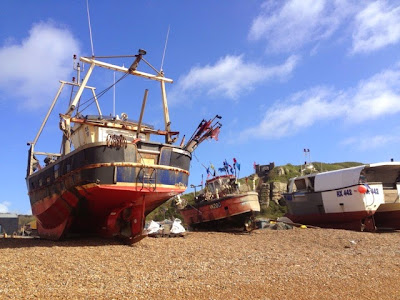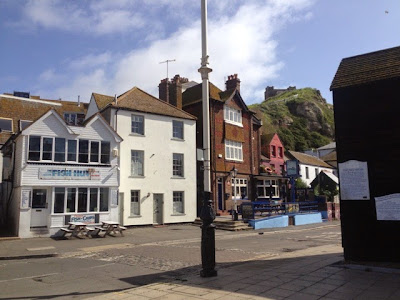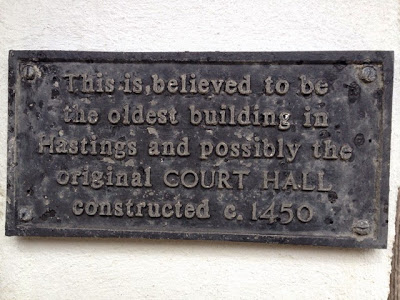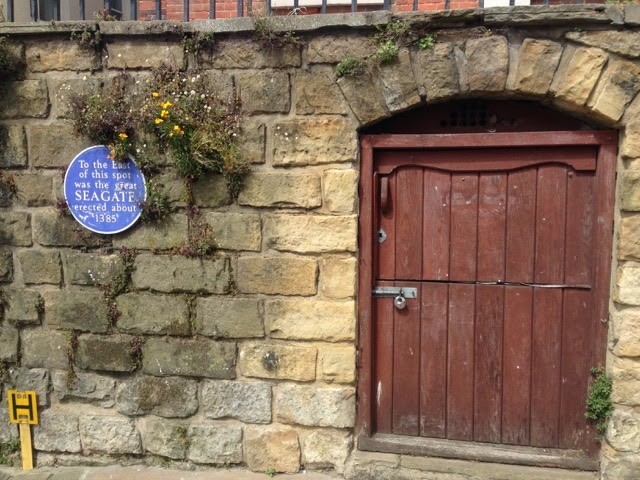
When the Romans arrived in 55BC a settlement already existed in the port region. Iron ore was rich in the rocks here just north of the town, giving employment to over a thousand men and shipped out by boat making Hastings the largest mine in the Roman Empire! Departure of the Romans and closure of the mine saw a decline within the town. Weather, even back then, played its part by battering the Sussex coast with an occasional ferocious storm and also vulnerable to the added hazard of a longshore drift; the eastward movement of shingle along the coastline causing drastic change over time. The original Roman Port is more likely to be underwater long ago.
History shows us that back in the 6th Century, Hastings was a separate 'kingdom' from that of 'Suth Saxe'' (meaning South Saxons, that is now 'Sussex') It appears to have stayed this way until King Offa of Mercia invaded Southern England and a battle ensued near the city defeating the 'tribe' of inhabitants. Records show that in 1011 the Vikings overran all of Sussex, Surrey and Kent. On October 14th 1066 the famous Norman Conquest battle was fought just 8 miles to the north of the city. William the Conquerer defeated King Harold, the last Saxon King of England. A castle was built but eventually succumbed to erosion of the sandstone cliffs. (*an interesting note here from my Bahama history: that one of the most successful groups that compete in the Annual Junkanoo Parade in Nassau are called 'The Saxons'!)
Hastings became an important fishing settlement but the imposition of taxes on luxury goods soon brought the trade of smuggling to the city. On the West Hill the soft sandstone made it possible to carve caves by hand for the smugglers to use. Their trade disappeared after the Napoleonic Wars where the town became a promising seaside resort owing to the fabled health giving properties of the seawater and local springs and Roman Baths.
Hastings has economically suffered much during the centuries having lacked a substantial natural harbour. Attempts were made to construct a stone harbour during the reign of Elizabeth 1st but once again terrible weather took away all the efforts leaving a fractured stone wall as all that remains.
In Victorian times the town spread westwards forming the urban area of St. Leonards-on-Sea. Hastings became a leader in the fishing industry and boasted the largest beach-launched fleet in Europe. The fleet has been based on the same beach below the cliffs of the East Hill for possibly as long as 600 years; all due to the prolific fishing grounds of nearby Rye Bay. Most vessels having been registered in Rye bearing the letters 'RX' on their hulls. R for Rye and X for SusseX.


The town has grown as a popular beach resort town. Famous for quaint streets with shopping for everyone.
During the 2nd World War Hastings took some direct hits from German bombing. Places are still marked today where there was significant damage and loss of life. Many of the Hastings fishing vessels were ready for use in the evacuation of Normandy.
Seafood can be bought readily on a daily basis from the fish shops on the waterfront where
we were staying.
A visit to the Maritime Fishermans Museum where all the records from the infamous fishing fleet can be seen along with artefacts and photographs. Walking outside one can compare yesteryear to present day.
Hastings town is host to many well known events. The famous May-Day, Jack-in-the Green Festival brings thousands of visitors to the town. Old Town Week in August and in September Wine and Seafood festivals keep the town alive. The Dolphin Pub was next door to us and has won the 'Best Pub Award' two years in a row known for its hospitality and fine selection of local musicians who play there.


A walk through some streets one finds well preserved buildings with plaques displaying their estimated dates and origins of use such as the first Court Hall dating back to 1450, nearly 200 years before the Pilgrims Landing in America!

































No comments:
Post a Comment